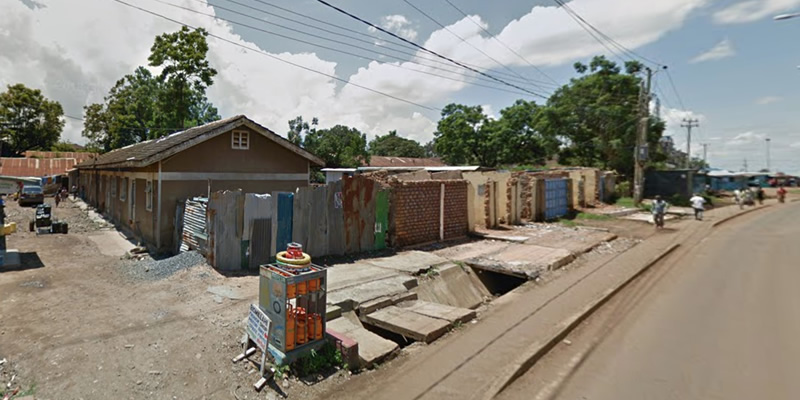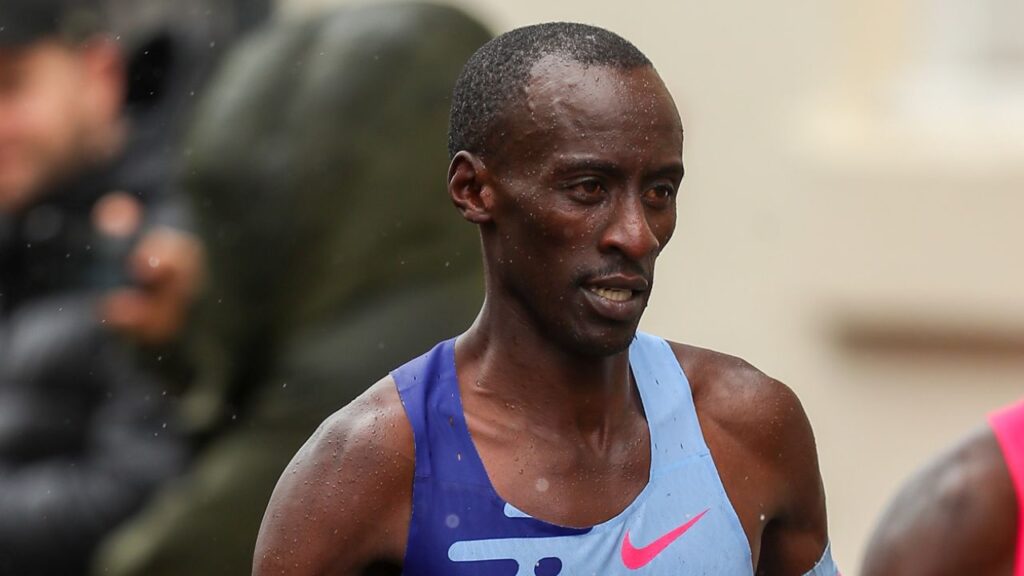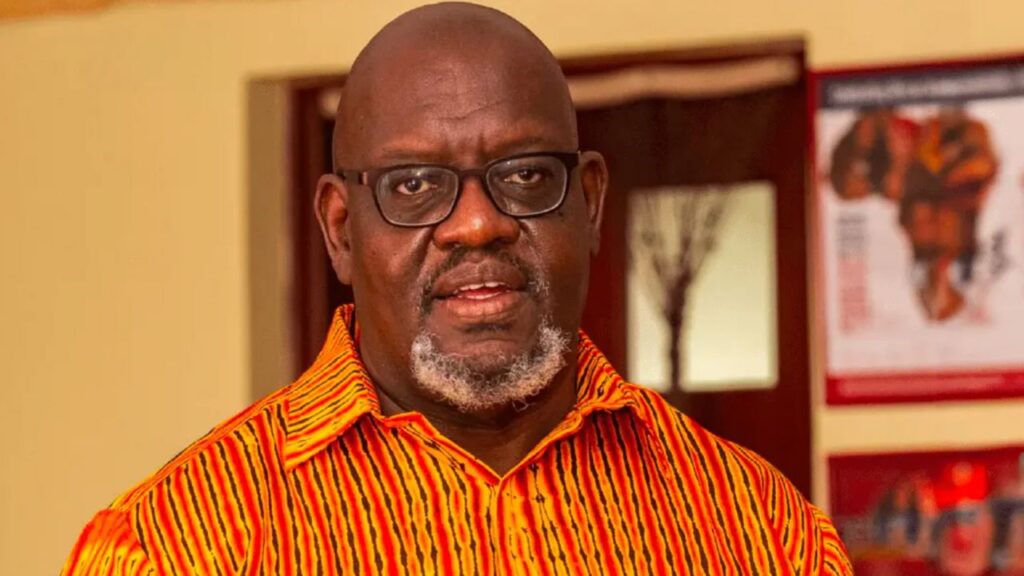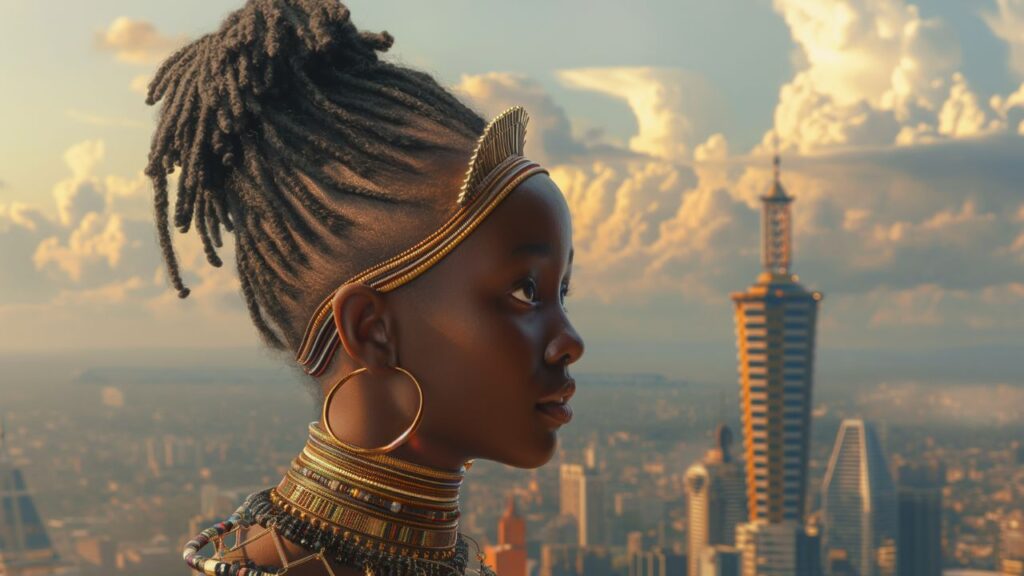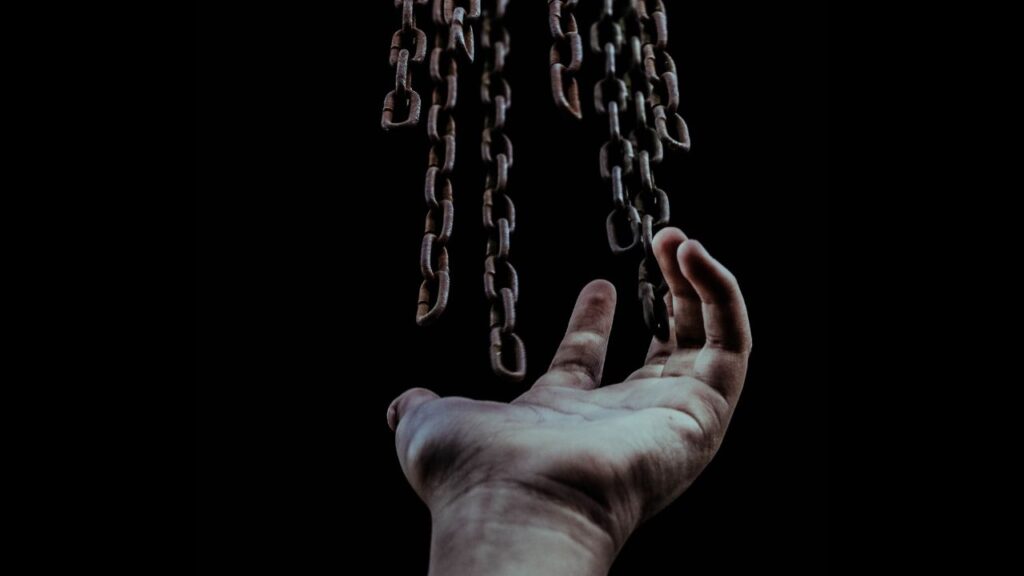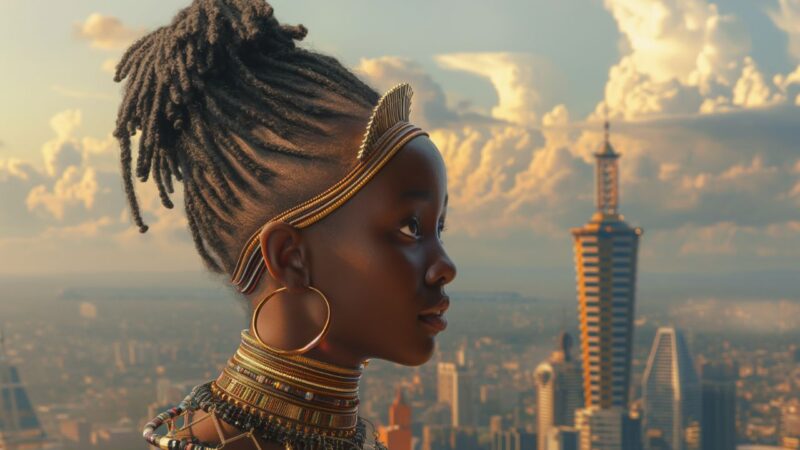Kondele neighbourhood in Kisumu is famous and infamous. It is a place torn between its cultural richness and vibrancy, as well the lurking darkness of violence. You can almost feel it. “Kondele inachomeka” (Kondele is burning) are two words that have been communicated in texts and calls amongst the residents of Kisumu more than any other during election cycles. These words have ominous foreshadowing of blood loss, violence, death and destruction. And news of riots in Kondele with accompanying images of tyres burning and riot police chasing demonstrating youths, always delivered in a matter of fact way, has been one of Kisumu’s greatest infamies.
I have received quite a number of “Kondele inachomeka” messages on my phone. I have become accustomed to the weight of meaning in these messages. When I receive these messages, I know to prepare. I know it will take me longer to travel between Kisumu central business district and my house on the other side of town. I also know that people travelling between Kisumu and Kakamega will not make it home on time. I also know that “Kondele inachomeka” triggers panic in the hearts of my non-Luo colleagues. Their relatives will call worried about their safety. Especially those who come from communities with political leaders who are in opposition to Raila Odinga or involved in some political tussle with him. And sadly, a few moments after “Kondele inachomeka” text messages, “Urgent request for blood donation” texts with images of victims of violence, fresh like a scene of a massacre, would follow. This will be a confirmation of the expected – that demonstrations have descended into chaos, and Kenya Police have excelled at the sport they are best at, that is quelling demonstrations with brutal and deadly force. As expected, Kondele and its youth will bear the brunt of this political contest.
Kondele is also a place of ironies. One of the biggest ironies is that the regional blood bank is located within two hundred meters from the heart of Kondele. It is almost a perfect design. That one area of Kenya that has experienced most bloodshed during political contests between opposition and government sits within a few hundred of meters from a regional blood transfusion center. Makes a lot sense. People will lose a lot of blood; why not lose it within the vicinity of a transfusion center? On tragic days, such as during the post-election violence of 2007, the regional transfusion center would completely run out of blood. Most of it had been soaked up by the red dust of Kondele where young men lay in pain, bleeding in the hot afternoon sun from bullet wounds from Kenya Police. Some lucky ones made it to the hospital where they lay down, in pools of their own blood on floors of then Nyanza Provincial Referral Hospital. Kondele had quickly transformed into a war zone akin to Baghdad or Mogadishu with disturbing statistics. Some reports showed that during the 2007 post-election violence, as many as 40 people were getting shot dead in a day.
But before post-election violence, there was Kimwa Grand Club. As the name suggests, it was indeed grand. It was a one-stop shop for entertainment, food and accommodation at the heart of Kondele. Kimwa was loved when politics was good. And loathed when politics was bad. And politics being the thread that holds the fabrics of the Kenyan society together, would also sneak into Kimwa, into people’s drinking tables, into their drinks and soon into their conversations. Kimwa was a happy place most of the time. One only needed to visit it on a good night to appreciate the spirit of Kondele, of Kisumu.
Kimwa defined this spirit, absorbed it and embodied it. Apart from Kimwa Grand Club, there were really no landmarks commensurate to the behemoth name of Kondele. Club Dona across the road from Kimwa tried but couldn’t keep up. Hotel Cassanova down the road had long lost its glory. There was nothing really comparable, beyond the roads that split the Kondele into two. Sometimes it looked like the chaos present where the Kibos road met the Kisumu-Kakamega road defined life in Kisumu during elections. Everyone in a car, matatu, boda boda or on foot wanted to move forward, but there was nowhere to go as people got in each other’s way on the small, congested and neglected tarmac roads. Vehicles traveling towards Mamboleo, or Kibos or Kisumu CBD would negotiate for space through high-pitched horns and curses from their drivers. If you were sitting at the top of Kimwa’s balcony, one would watch the full display of this negotiation in daily life. When the night would fall, some of these men and women would end up at Kimwa, to close their day in dance and merriment of sorts. It is like Kimwa would lure them in the evening with their pockets full, and expel them the next morning with their pockets empty, to go look for more.
Kondele is notoriously cosmopolitan. The most famous shops in this place have historically been owned by people not native to the region. There is always a “Kwa Karanja” with the best nyama choma, or a “Kwa Njoroge” selling all types of goods. These places could be destroyed and razed to the ground in one week of political madness. The following week, when normalcy would return, they would be up, rebuilt with the same hands that destroyed them.“Kwa Karanja” is like the local phoenix that rises from the ashes to remind people that life must move on, in the peculiar Kenyan way.
Then there was Kimwa. To think that a random Kenyan, Miriti Mbui from Meru, could come to Kisumu and set up Kimwa Grand, a successful club worthy of hosting international superstars, is indeed a testament of the Kenyan dream. This was proof that one could make it anywhere. To also think that this same man would lose everything in 24 hours of madness; that the same people that danced to the stars at Kimwa, would set upon her and dismantle her block by block, before setting her on fire, is also a testament that the Kenyan dream rests on political quicksand. It could sink at any moment.
My fascination with Kondele began in the mid 1990s. I was traveling with my mother in a matatu towards Kisumu when a man as old as my mother, without any warning, vomited all over the floor of the matatu. My natural conclusion was that the man was sick and needed help. The matatu tout and driver held a contrary opinion. When this man was done vomiting, the conductor informed him in an ominous voice that he would drive to Kondele where the man would be taught a lesson. When he stopped in Kondele, the tout left and came back with a gang of young men who took great pride is slapping this man around. I remember him pleading for mercy, saying he had malaria. No one cared. Out of nowhere, a bucket full of water arrived. The bewildered man got on his knees and washed that spot of the matatu, picking pieces of vomit from the floor. He also paid 100 shillings for “wasting people’s time”. I did not understand why the tout and his driver felt that Kondele would the best place for this man to get a taste of street justice. But then again, there are places like Kondele all over Kenya. Places where the violent services of men can be outsourced cheaply, for a drink, and the men dispensing these crude forms of justice neither have remorse nor subject themselves to any law.
While I was at Kenyatta University, this place was Githurai 45. When university students would refuse to bow to the forces of extortion through arbitrary doubling of fares from Nairobi CBD to Kenyatta University, the matatus would take a detour into Githurai 45, and drive to some shady, nondescript place. The vehicle would stop, the driver would switch off the car and the tout would approach a band of young men. After a few exchanges, the tout would walk back with the young men in tow. One could tell that these men were adept in the act of exerting fear into the hearts of men and women. And just like bloodhounds, their sense of smell for fear was so sharp that when they walked to the matatu, they knew that the job was already completed. Everyone would rush to pay the exorbitant fares.
After this extortion ritual had been finalised, the touts would taunt us, “Mbona hamukulipa mapema”, (Why didn’t you pay before) as if blaming us for not allowing ourselves to be extorted promptly. How could we not know that there was a parallel world out there that had grown and thrived in the rich medium of corruption? Thriving as a result of the government’s penchant for disappearing without official leave of absence? This is the world that had created the angry youth gangs of Kondele, the Mungiki, Chinkororo, among others. They knew that with the absence of government involvement in social welfare, political players would use these gangs to leverage their anger and disenfranchisement for political gain, as a cheap source violence against their opposition. Or destroy them when it felt threatened.
I first visited Kimwa in the year 2000, while waiting to join campus as I worked at the law firm of my late cousin, Grace Awino. The corridors of justice were littered with stories of past night parties at Kimwa. I was very curious and wanted to visit this club and feel its spirit, which as I had been told, was reflective of the spirit of Kisumu. It was rich, dark, powerful and very expressive, just like Kondele, I was told. During my visit, we mostly spent time at the basement, which was a full-blown discotheque. The first floor was an open-air club where older people enjoyed live benga and rhumba from famous bands. The entrance was manned by muscled men acting as bouncers. These were young men who spent long days in backyard gyms building muscles for lack of anything else to do. Employment in Kisumu was hard to come by. Most of industries had withered slowly before shutting down. The remnants of Kenya Breweries depot and Kisumu Cotton Mills (Kicomi) stood in shame as reminders of what a mixture of mismanagement, corruption and being on the cold side of Kenyan politics could accomplish. Men and women who had lost their jobs in these places would wake up when the sun was over Lake Victoria, wear their threadbare shirts and shoes with paper thin soles, and head to jua kali, a stone throw from these once vibrant industries. They would engage in political and philosophical talk before splitting whatever little they had made through menial work or small deals. At sunset, they would take a final look at Kicomi and the Breweries, before walking slowly towards their residences in the shanties on the fringes of Kisumu’s CBD. Kimwa kept some of these young men out of trouble. It provided a place where young men and women from slums surrounding Kondele could earn a living as cleaners, waitresses or bouncers.
Kimwa was also a cultural hub where Luo benga music was curated. Musicians such as Okach Biggy, Musa Juma and D.O. Misiani were common names on the roster of musicians playing at Kimwa. They were not only assured of a good crowd but of good earnings. During the day, one could see these musicians basking in the sun at Kondele like brightly colored iguanas, seeking the strength of sun before turning into entertainment powerhouses at night. At the height of Kimwa’s glory, Awilo Longomba, the 1997 Kora Awards winner in the “Best New Artist” category for his chart-buster, Dibala bala, visited Kisumu. No international artist of this repute since Franco in 1988 had visited Kisumu since. This was partly because despite Kisumu being a town where the local people were lovers of a good life, no investor had put up facilities that were capable of playing host to an artist of Awilo’s stature. So when Miriti Mbui, an ambitious entrepreneur would come and build an audacious club and hotel at the heart of Kondele, Kimwa and Kondele became a match made in heaven.
Awilo Longomba performed to a delirious crowd. He was wild. They were wilder. They asked for more and he gave them more. My late cousin, Grace, was in that crowd. She would later tell me of how ecstatic Kisumu was. How Kimwa had put the city on the map and that there were plans for bigger artists. Seven years later, Kimwa would be caught up in a violent political struggle between Raila and Mwai Kibaki. The youth in Kondele, and across Kisumu, felt that Kibaki’s government had carried out unforgivable injustices with the disputed presidential elections of 2007. They decided to rebel violently and attack everything that had any semblance to imagined or real enemies. Kimwa would be one of the casualties.
It was evident that the fate of Kondele and Kimwa were tied together like that of a mother to her child. Kondele gave birth to Kimwa, nurtured and made her whole, big and powerful. Kimwa opened Kondele to the world, made it more cosmopolitan and a true representation of Kenya. The day Kondele started burning, we were locked in the house, following the violence through news bulletins and text messages. The air outside was thick with burning tyres and screams punctuated with burst of gunfire from Kalashnikovs. We heard a knock at the door and saw a man standing there with his eyes wide with news. “Niko na TV kubwa, 60 inches yenye nauza aluf tano” (I have a big TV, 60 inches, I’m selling it for five thousand shillings). He said this hurriedly while glancing from side to side. We were talking to him through the window as the city was under curfew. When he sensed our hesitation, he took off and disappeared in the mixture of the afternoon sun and death. The smoke from Kimwa quickly engulfed the whole of Kondele. All its memories wafted slowly away to the sky, as looters carried whatever they could.
Thinking about it now, the anger against Kimwa must have been personal. In those preceding few weeks, thousands of youths had been killed in Kondele, yet Kimwa Grand stood there in its majesty, as if daring the angry youth to challenge it. Kibaki’s government was a dominating violent presence, yet Kimwa stood there, looking at these people who gave it life, offering no help. This indifference was too much to take. Kimwa must have also been symbolic of economic dominance and marginalisation of the Luo community stemming from the political fallout between Jomo Kenyatta and Oginga Odinga in the late 1960s. How can they be killing us, yet they want our money? They must have asked this as the body count in Kondele kept climbing. The violence and determination with which Kimwa was destroyed reflected how deep and painful political losses are. That people were willing to risk their lives to destroy such a magnificent property shows how Kenyan politics precipitates dark, deep-seated political grievances. When the spirit of Kimwa had been broken down by fire and stone, hundreds of youth could be seen with chisels and hammers, breaking through mortars, pulling out twisted metal like vultures scavenging on the meat from a dead buffalo. At the end of the post-election violence season, only memories were left where Kimwa once stood.

